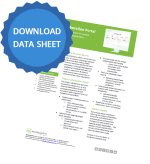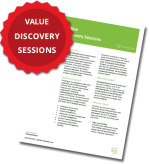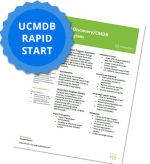Building an SAP Testing Center of Excellence
By: Matt Angerer
I have spent the better part of a decade working in a variety of Software Quality Assurance (SQA) roles. My experience leading the creation of an SAP QTP automated framework was by far the most rewarding. In this article, I chronicle my experience retiring an archaic IBM RFT framework and standing up a QTP framework tightly integrated with HP ALM (Quality Center).
Anyone that has watched the movie A League of Their Own must remember the scene when Dottie quit the team right before the World Series. The conversation between her and Jimmy [Tom Hanks] has been one of the most unforgettable scenes for me. Dottie’s husband just returned from WW2 and she decided to quit the team and move back to the country. When Jimmy asked why she wants to leave baseball, she looked at him and said: “It just got too hard.” The look on the face of Tom Hank’s character could make your neck hair rise to attention. Stone faced, Jimmy leaned forward and said:
“It’s supposed to be hard. If it wasn’t hard, everyone would do it. The hard is what makes it great.”
Managing SAP projects is hard – nobody will question that statement. Ensuring that your automated regression testing suite is effective, balanced, and properly designed is even harder. The scene referenced above in A League of Their Own sheds light on why difficult situations shape character and ultimately drive professionals to search for better and more efficient ways to trap SAP defects. Sure, we could all throw up our hands and say “It just got too hard” and walk away from the sometimes messy field of SAP consulting, project management, and testing strategy for the matter. However, as Jimmy expressed to Dottie: “It’s supposed to be hard. If it wasn’t hard, everyone would do it. The hard is what makes it great.”
Overcoming SAP test strategy challenges with a balanced approach to people, process, and technology is sometimes a matter of embracing the chaos while riding the waves of good and bad. If you’re an IT professional of any kind, you can relate to Dottie when she wants to throw in the towel and walk away from baseball for good. On the flip side, some of us can also relate to the more experienced and battle scarred character that Tom Hanks played [Jimmie]. A Roadmap to Streamlining SAP Automated Regression Testing for Global Organizations is an attempt at making “the hard” achievable for organizations of all shapes and sizes that decide to implement SAP. Full of common sense advice that is often overlooked, we provide you with the necessary insights to make “the hard” great again.
Why Automate SAP Regression Testing?
The information age we live in today has turned into a boiler maker. Software is dynamic, project managers have lost their patience, and the CFO is focused on the bottom line. The project schedule is aggressive and regression testing cycle windows have shortened as a result. If one aspect of the project delivery schedule is delayed, often times the leadership team will look to cut corners. One of the first areas they look at is the testing phase of the project. Before Go-Live, a proper regression testing of existing functionality for all the live SAP productive units isn’t a luxury – it’s a necessity. But, guess what? The CFO is concerned about the millions of dollars on the line for each month that the project go-live is delayed (contracted SAP functional experts aren’t a cheap date). Before you know it, you are called into a meeting with questions like:
- How can “you” (test management) reduce the regression testing cycle even further due to delays in other phases of the project?
- How can “you” (test management) magically ensure sufficient testing coverage and effective QA for critical SAP business processes while slashing your test execution window in half. And, oh by the way, we (the business) can’t provide you with any more resources (people) to execute test cases manually.
- How can “you” (test management) mitigate the “ripple effect” associated with configuration changes across SAP modules?
All of these questions characterize the challenges that come with manual regression testing. Manual regression testing often requires end users of the business to “act as testers” during the regression testing cycle of major roll-ins. The advantage of using the business SAP Power Users during regression testing is that it truly provides them with assurance that their critical business functions will continue to work. The disadvantage on the other side of the coin is that manual testers provide less test coverage and offer inconsistent results – not to mention it’s time consuming!
If you’re still reading this blog post and nodding your head right now – then you’re in for a treat. SAP test automation can address many of the challenges outlined above. It’s not a silver bullet by any means, but it can provide the following benefits:
- Instead of waiting until the last leg of an SAP roll-in to regression test, you are able to run scheduled SAP automation cycles – ultimately reducing the cost of defects [early detection] and helping to improve overall quality.
- Speed – enough said.
- Repeatability and consistency. Humans are humans. We make mistakes.
- Test cases can be scheduled to run independently (e.g., overnight) with very little human intervention.
- Automation scripts can be used to automatically setup master data, variants, and even transaction data across SAP testing environments.
- Organizations can develop “Navy SEAL Like” automated testing capabilities. The testing team size is small and highly effective. Regression testing cycles are no longer dependent on SAP Power Users from the business manually testing critical business functionality.
- With the right toolset such as HP Quick Test Professional (QTP), reporting and critical defect detection is automatically synchronized with leading test management tools like HP ALM or Quality Center. Project Managers have finger-tip transparency.
- Month-end financials, sales order replication from CRM to ECC, bank reconciliation, production planning, demand planning and other key mission-critical business processes are confirmed with automated regression testing.
- With SAP support pack stacks (SPS) and Enhancement Packages – an automated test suite ensures critical business processes continue to work without error.
The benefits outlined above make SAP automated testing a necessity. Yet organizations are still on the fence of whether to outsource SAP testing services to leading consultancies, build an internal SAP testing center of excellence (CoE), or develop a hybrid approach to outsourcing that involves both in-house expertise and offshore/outsourced SAP automation expertise.
Ask the CIO and he’ll recall conversations he had with other C-level executives about outsourcing. From the C-level executive perspective, outsourcing SAP testing (both automated and manual) is the perfect solution – especially for a global organization. Transfer risk and responsibility to a 3rd party consultancy and your problems are solved – your hands are wiped clean – or so you think. Even better, you save a bundle of money by hiring juniors in low cost countries like India or Malaysia. The CFO is happy and the shareholders on Wall Street agree this is the right approach. The Solution Integrator (SI) is also tickled pink because they now hold the responsibility of bug fixing and regression testing. Can you say “revolving door”? This is the proverbial situation of allowing the “fox to guard the hen house”. The message is simple: just because offshoring (outsourcing) testing has been somewhat successful for other global organizations does not necessarily mean it will work for you.
An SAP QA Manager must be careful in choosing their battles – especially with upper management. We must learn to carefully present the facts of a situation and recommend the best solution for the organization. For some firms, 100% outsourcing of your SAP regression testing is the best strategy. The 3rd party firm finds the “right people”, employs the “right process”, and leverages the “right technology” to make it a fruitful relationship for many years to come. For other organizations, it makes sense to get your ducks aligned internally before engaging with a 3rd party vendor to outsource SAP automation testing.
In the words of Clint Eastwood, A Roadmap to Streamlining SAP Automated Regression Testing was written to provide you with: The Good, The Bad, and The Ugly. As we all learned during the financial collapse of 2008, sugar-coating the facts will get us into a bad situation very quickly that requires years of hard work and sacrifice to dig ourselves out of. Our goal is to present you with common sense steps and give you real-world hints that can only be provided by the people in the day-to-day operational activities of developing an SAP automated testing Center of Excellence (CoE). The first step we recommend is choosing the “right test tool” and the “right automation framework”.
1. The right testing tool and automation framework can make all the difference.
For global organizations that are implementing SAP ECC and CRM, choosing a true “application lifecycle management” [ALM] toolset can make all the difference. Many organizations are short-sighted and decide that a Microsoft Access and Excel-driven approach to “everything test management” is the tried and true method of achieving success. This approach may work if you’re building out a web-based SaaS application that is designed to accomplish a few different functions. But, when you’re rolling out SAP ECC with every module known to mankind – you better hunker down and do the necessary analysis of the tools available in the marketplace. Choose a test management tool that integrates easily with your chosen automation toolset. Additionally, make sure that your chosen automated toolset can automate testing in systems other than SAP. This is especially important for designing E2E testing of all business transactions (e.g., SAP CRM to SAP ECC).
Table-1 provides you with a format to evaluate leading test management tools. Toolsets to evaluate may include HP Quick Test Professional (QTP), IBM Rationale Functional Tester (RFT), Worksoft, Panaya, TestAnywhere, Janova, and SmartBear’s TestComplete. When making a selection, it is important to holistically view the entire suite of software applications throughout your organization. Some testing vendor’s focus specifically on SAP, but you may be well-suited to consider a vendor that offers strong requirements traceability for future change impact analysis. SAP is complex software. Identifying “what to regression test” is sometimes half the battle. Think “Quality Assurance” from the requirements definition process all the way through systems delivery.
| Decision Criteria | Vendor A | Vendor B | Vendor C |
|---|---|---|---|
| Cost | |||
| Script Generation Language | |||
| Object Identification | |||
| Reporting Capabilities | |||
| Change Impact Analysis | |||
| Scripting | |||
| Script Playback | |||
| Script Execution | |||
| Browser Support | |||
| Descriptive Programming Approach | |||
| Automation |
Table-1: Sample Criteria to Evaluate Test Management Software Vendors
Other considerations that should weigh heavily into your decision include the support apparatus offered by the vendor and the ease of implementation. Many vendors are offering their test management toolsets SaaS (software-as-a-service). Companies like Janova Software and Panaya offer cloud-based automated testing solutions. Other vendors like HP and IBM require local installation of their automated toolsets which integrates with their web-based test management tools. Choose wisely, but choose based on your unique situation.
2. Knowing which SAP automation framework to build is critical for maintainability.
Software is dynamic and ever-evolving. Nothing remains the same. As an SAP QA Director, you should skeptically validate all claims made by the implementation partner and internal project management team alike. Blindly accepting statements without challenging them on the spot will get you into a heap of trouble in the long-term. Things you might hear include: “There isn’t a need to stand up a virtual server for the automated software – our SAP automation engineers will install directly on their workstations.” Or even worse, “Managing requirements traceability in a centralized toolset is overkill. We can easily track requirements with Excel-based spreadsheets and use other sets of Excel workbooks for Gap tracking and Test Control.”
In a few years, the implementation partner you originally chose to implement SAP is likely winding down. The KT (knowledge transfer) will occur to the internal team. Your QA & Test team is now responsible for the monthly SAP service packs. If your automation framework is not robust, or your framework is lacking requirements traceability – it’s a nightmare to manage. We’ll talk about managing change impact a little later in this whitepaper, but the critical success factor for choosing an automation framework is to think in terms of maintenance and long-term sustainability.
We will also describe key architecture considerations for your SAP automation framework later in this post, but you should pick a hybrid SAP automation framework that facilitates unattended test automation execution. A framework in which you can kick off a series of end-to-end test scenarios automatically (without real people monitoring). Some believe this is unrealistic, but with careful planning and design – it can be accomplished. The problem occurs when the automation framework was originally designed by an unknowledgeable resource that has to be “undone” and “redone” in another toolset and framework altogether. Don’t fall into this trap. Make the right decisions up front and you’ll save yourself months of frustration and wasted resource time.
3. Define SAP regression automation goals and communicate them often to business stakeholders.
Some people take others knowledge at face value based on their titles within an organization. Its common sense, but it helps to remind yourself at times that others in the organization are not always promoted into positions because of their knowledge. It’s a fact that certain people hold positions of decision-making authority due to whom they may have known prior to joining an organization, or being in the right place at the right time. Reminding yourself of this fact necessitates the importance of outlining the goals of automated regression testing to all stakeholders. Don’t assume that everyone understands the distinction between System testing and Regression testing.
The key is to identify what regression test cases would make good candidates for test automation. To do this effectively though, you’ll need to first define the goals for automated regression testing while also outlining what “regression relevant” truly means to the business. Since SAP releases are repetitive, it’s not feasible (nor is it necessary) to test all functionality including transactions, interfaces, configurations, etc.., during every regression testing cycle.
Many factors come into play when determining the goals of automated SAP regression testing. Largely it’s about ensuring that the critical path of the business’ operations are always “up and running” on SAP. If you’ve been around the block a few times, you’ve heard of the following E2E processes:
- Campaign to Cash
- Order to Cash
- Hire to Retire
- Engineer to Order
- Make to Stock
- Postpaid Service Contract to Billing
- Make to Order
- Lead to Prepaid Service Contract
- Purchase to Pay
Since project managers and the business are bottom-line focused (most of the time), they typically provide you with X number of days to get through your regression testing cycles. Often times, you have about 1 week (5 business days) to get through the automated regression testing cycle for monthly SAP service packs (sometimes even less). For a large roll-in or enhancement project, you can expect a few weeks – give or take. During this time period, your testing cycle should ensure that all key interfaces spanning systems and trading partners (not just SAP!) are still working as designed.
Remember: the focus of automated regression testing is to ensure the critical path of the business is not impacted by a new build (code) moving into production. As an SAP QA Director, you should outline this in the organization’s master test strategy. Excerpted below was my definition of SAP regression testing for a global manufacturer of precision instruments:
Regression testing provides confidence that key subsets of existing functionality have not been adversely affected by new or amended functionality. It is not the purpose of regression testing to cover actual testing of new or modified functionality, as this will have been covered in earlier test stages (unit and functional testing).
Regression testing covers key areas of existing functionality, such as core business critical functions.
It is not feasible, nor desirable, for regression tests to cover every piece of functionality due to the effort involved in both setting up and maintaining the regression tests, and also the amount of time and effort involved in executing the tests. The degree of functional coverage in the overall regression test suite will depend on the number of agreed critical functions, with areas such as non-essential reporting, administrative views, and low volume queries/transactions being deemed out of scope. The functionality of a particular code release will determine the sub-set of the regression tests within the overall regression pack, which need to be run. However, the tests will cover as wide a range of functionality that is possible for a given amount of effort.
Problems in the following areas will be reduced by performing a regression test:
- Adverse impact on functionality in another area due to changes made in one area;
- Reduction in performance (a high-volume environment will be required for performance testing to be representative of production; however, performance problems can still be identified in a medium volume environment if a particular test runs slower on the new code set.);
- Exception and error reporting (by identifying problems before they are put into production).
The main benefits of performing a regression test phase are as follows:
- Provides confidence that a new release will not adversely affect key functionality currently in the production environment;
- Reduces the risk of disruption to the production service immediately after a new code implementation, and associated business impact.
One more analogy to solidify our understanding of regression testing would be when a manufacturer enhances a motorcycle that is already in the marketplace. People all over the world are driving this motorcycle model today. The manufacturer decides to make a few enhancements that will improve handling and performance. Before releasing the new model into the marketplace, they first need to conduct a series of tests on the bike.
- Engine starts. Check
- Motorcycle accelerates. Check
- Motorcycle turns to the left and right – steering works. Check
- Bike slows down to a stop after acceleration – brakes work. Check
Confirming these functions continue to work after the enhancements (modifications) have been completed to the motorcycle is critical. If time and budget permit, the QA team can conduct additional testing (e.g., exploratory testing) to ensure other functions of the motorcycle continue to work as designed. Often times, project managers look at the regression testing phase as the “catch all” of the testing layers. When bugs slip into production, you’ll often hear: “Well, why wasn’t this caught during the regression testing that we do?” Save your fingers and outline it once within a master test strategy. People will ask “why wasn’t this trapped during regression testing” about bugs that surfaced in non-critical business functionality. When others do ask this question (as they inevitably will), you can use it as an opportunity to quickly reiterate the goals of regression testing. If you’re so inclined, you can take it a step further by discussing QA (prevention) techniques that would have trapped the bug much earlier in the systems delivery lifecycle. It is important that the organization as a whole understands the purpose and goal of the regression testing layer. It reduces (never prevents) finger pointing.
4. Determining what business scenarios are “critical” to the business requires collaboration.
On most SAP projects, the implementation partner and business conduct a series of “fit/gap” analysis meetings (otherwise known as JAD sessions) to determine what needs to be customized from the global SAP template that is out-of-the-box. In the late 90s and early 2000s, SAP experts categorized their knowledge based on module (e.g., SD or MM Expert). Today’s SAP professionals are more known for their cross-module expertise, rooted more deeply in process. With that said, you should always identify the end-to-end scenarios (outlined in Step #3) as critical – forming the basis of building your SAP automated regression testing suite.
Beyond the end-to-end scenarios, your SAP automation strategy should include the:
- Identification of functions that are used most often in SAP production. Vendors like Panaya offer SAP impact analysis tools to quickly identify what SAP transactions are most used by your business end users. Examples such as entering sales orders, invoicing, month-end closing, creating material master records, and other high volume activities need to be tested and included as part of your SAP regression automation suite.
- Segmenting of functionality that includes a high degree of customization. If your SAP CRM Service template has been highly customized – it would make sense to increase automated regression testing coverage in this area.
- Interface communication testing of SAP with legacy systems and trading partners. SAP PI, EDI, and CRM Middleware are incubators for defect activity. As a build moves through an SAP landscape, manual configuration is needed (pre set-up work) in each environment. The human intervention needed to setup partner profiles as an example lends itself to errors. Automating the regression testing of sales orders created in SAP CRM to SAP ECC is a necessity.
After you’ve identified the business scenarios to include in your SAP automated regression test suite, it’s time to decide upon the automation architecture The example figure in Step #5 shows you a sample automation architecture and key considerations.
5. Adopt a Tiered Approach to SAP Automation Architecture
An automation framework can be broken down into 3 distinct tiers. Below is a description of each tier that you should include in your SAP automation framework. Figure-1 provides an example of a tiered architecture.
Tier 1: The top tier of your SAP automation framework should include:
- SAP Solution Manager (SolMan) and Transport Management Tool (Conigma)
- Web-based Application Lifecycle Management (ALM) Tools (HP ALM, IBM RequisitePro, SmartBear QA Complete)
- Client-side testing applications like HP Sprinter (an add-on for HP ALM)
- Help Desk (incident reporting) System (Service Now)
- Applications Under Test (AUT), including: SAP ECC, SAP CRM, Legacy Systems, Workstations
Tier 2: The second tier of your SAP automation framework should consist of your automated testing tool. This could be HP QTP, IBM RFT, Janova, Panaya, Worksoft, or SAP TAO. As mentioned, pick what is best for your organization as a whole bearing in mind that SAP integrates with many other software applications (e.g., JDA, formerly Manugistics) which may be included in your overall SAP regression test suite. Many components exist within Tier 2, including:
- Reporting component — If you choose HP QTP as an example, the automated testing results (evidence) will be reported in real-time back to HP Quality Center or ALM. It is important for you to investigate your organization’s overall reporting strategy. Do you want real-time reporting, or are you satisfied with “point in time” snap shots of test execution and defect reporting? Asking yourself questions like that will determine which toolset you’ll ultimately end up purchasing.
- Primary (Driver) Testing Script components — Each of the end-to-end (E2E) test cases described previously in this white paper are driver test scripts. Each of these test cases consist of re-usable functions (e.g., create sales order with VA01 or view invoice with VF03).
- Error handling components — How many times does an unexpected yet irrelevant error appear? These components ensure that your automation framework is robust enough to log these types of errors, but continue running an end-to-end test script unattended. Other components include identifying errors which actually matter and should be logged as defects within the test management tool.
- Business Process Library of Reusable components — Unique SAP T-Codes will make up your re-usable library of components. These components can be used within the driver test scripts. As your SAP Automation engineers develop more automated test cases with different data sets (e.g., Switzerland vs. Chinese data) — they can easily interchange components in an automated driver test script.
Tier 3: The third tier is your relational database management and file system. All objects in ECC or CRM are stored in an object repository (SQL Database) that is referenced by the automated testing tool (e.g., HP QTP). Each object in the repository is re-usable for different testing scenarios. What’s more is that the third tier should contain portions of your golden test set (Note: test data may also exist in tier 1 in the form of parameters stored within manual test cases). The required test data (to be used with the automated test scripts) may live within the automated testing tool and/or a stand-alone XLS spreadsheet. The source of automated regression testing reporting will begin in Tier 3 and feed up into Tier 2.
6. Strive for granularity on all levels when building your SAP Test Automation CoE
Granularity may very well be the cornerstone of developing a robust and maintainable SAP Test Automation CoE that can be called upon for the lifecycle of SAP. If you’re organization has implemented SAP, the odds of strategically changing direction to another ERP vendor is slim. Take into account each of these considerations when developing your SAP automated regression test scripts:
- Ensure that the common reusable library of components in HP Quick Test Professional (QTP) or another automated testing tool contains each unique SAP Transaction Code (T-Code) that your organization’s end users execute.
- Review your organizations critical end-to-end business scenarios. If not done already, granulate the E2E into high-level testing scenarios [MS Visio works great for this activity]. Further granulate the high-level testing scenarios into test cases (conditions). Finally, identify the specific SAP T-Codes executed within each test case. Granulate, granulate, granulate!
- Leveraging your ALM or Test Management Tool (Quality Center, SmartBear QA Complete), a test case is created for each end-to-end business scenario. Designs steps (conditions) are added to the test set.
- A “driver script” is used for each end-to-end business scenario. The O2C (order to cash) business scenario for your organization would be driven by one script that calls reusable actions from the common reusable library of components. The unique parameters required to execute the necessary string of SAP t-codes for instance are passed from the component level to the driver script level and executed over SAP.
- As described previously in this post — do not underestimate the importance of error handling procedures throughout the common functions in your reusable library. In order to schedule unattended automated regression test execution, your automated suite needs to be designed with sustainability and autonomy in mind. What a waste of resources to automate the test scripts and have humans continually monitor the execution! These valuable resources can be using that time to design/automate more test scripts.
- As an SAP QA Director, you should study up on open architecture and ensure that the automated testing tool your organization chooses can seamlessly integrate (in real-time) with the ALM/Test management tool. If you choose on vendor for both your ALM toolset and automated tool, then you’re likely going to have no problem with seamlessly integrating the software applications. Just be careful and don’t take the vendors marketing collateral as fact. Ask to demo their software in a live environment and to pilot the integration (free of charge to you). Some vendors will ask for a “retainer fee” to pilot their product in your environment. Nonsense! Push back on them by showing them the growing list of QA vendors who would gladly provide a pilot program free of charge. Protecting your organizations assets and bottom line is your 1st priority. Don’t get soft with the vendors vying for your company’s hard earned dollars. Your shareholders will thank you.
Why is granularity so important? Because business processes change, enhancements are made, and software is upgraded. Granularity of test components gives your company the modularity and ease of maintenance required for long-term sustainability. We can’t stress enough the importance of seeing the forest through the trees when it comes to “planning ahead” for sustained operation of your SAP environment. Additional considerations that are “best practice based one experience” include:
- Your SAP automation team should be small and effective — Navy SEAL style. Don’t allow your Solution Integrator or 3rd party vendor to sell you on the concept of growing a large team of non-value add testers. Keeping everyone in the world employed isn’t your responsibility as an SAP QA Director. Less is more when it comes to SAP test automation expertise. Foster, award, and nurture the talented team members.
- Near sighted “Test Experts” will spend half their day creating and/or searching for data to use in SAP testing environments. This is a complete waste of valuable company resources. Identify your “Golden Test Set” (both master and transactional) early on and develop automated test scripts to create the data cross SAP environments after each client or system refresh. It’s common sense, but you wouldn’t believe how many organizations (and testers) blindly go about every day manually creating data to test against. It is necessary some of the time, but most of the time — you should rely on your golden test set across SAP environments. Most importantly, separate the test data from the scripts! Never hard code the master & transactional data within the test scripts themselves. Quality Center allows you to create parameters and distinct “configurations” for each test script. Take advantage of this functionality and it will save you in the long-run.
- Don’t over complicate the process of estimation and planning required to build your SAP automated regression test suite. If you were a PMP, you’d break everything down (granulate) and then begin the estimation process. The same thing applies when the PM asks you (Mr. Test Manager) how long it will take to completely build the SAP automated regression test suite. Break down the components in a project plan with an estimate of each. Tie each component to a test scenario, and multiple test scenarios back up to an end-to-end business scenario. Simple enough. Provide your estimate and call it a day.
- Your SAP Process Experts, Champions, and Power Users need to work closely with the SAP Test Automation CoE. You should anticipate language barriers if the team is outsourced. Effective collaboration tools like Microsoft Lync and Skype can help overcome any language barriers that may exist. A peer review should occur via Web-Ex. When a change occurs to the script — it is best practice to have it peer reviewed and approved.
- To keep things simple, attach any documentation (e.g., Visio test scenario flows) to the test case within the test management toolset. Don’t get into the habit of storing these files on your workstation or on SharePoint somewhere. Clump them together in one centralized location and you’ll thank yourself when a key player on the team up and quits one day.
- Just like programing — make sure your automation engineers follow proper coding (VBscript in QTP) and commenting guidelines. Document the policies & procedures within your test management tool.
- Review your “Golden Data Set” every 3 months in alignment with SAP environment refreshes to ensure validity. If your organization rolls on another country to SAP, it’s highly likely that your Golden Test Set will need to grow to accommodate the transactional/master data used in that region of the world. You may also need to include additional master data elements as a result of company mergers and/or acquisitions which change the scope & complexity of your business model.
- Dry run your E2E automated scenarios over your SAP QA environment a few times. Share the results with the client SAP Process Experts.
Last, but certainly not least for Step #6 is to turn on versioning control in your test management toolset! If you’re using HP ALM to manage requirements, test planning, design, execution, and defects — the version control feature will show you how a requirement has evolved over time. This is invaluable information to the SAP Test Automation CoE. Most test management tools come out-of-the-box with version control turned off. Be sure to turn it on.
7. After you’ve assembled the key components of your SAP automation architecture, develop a governance model with the outsourced vendor or internal SAP center of excellence team.
The biggest challenge faced by SAP automation engineers is your organizations complex business scenarios, data requirements, and associated manual test cases. As requirements evolve and business process inevitably adapt to changing market conditions, the associated regression test cases need to adapt accordingly. There are several common sense methods to ensuring your outsourced SAP test automation engineers stay abreast of changes, including:
- In a global business environment, SAP Process Experts and Champions are often scattered throughout the world. As your on-demand automation team is assembled, your internal process experts and SAP power users should work collaboratively with the assigned SAP automation engineers.
- As the SAP Process Experts, Champions, and Power Users transfer knowledge to the SAP automated testing center of excellence, screen recording tools should be leveraged to capture every user action. HP Sprinter is an extremely effective tool for capturing a “storyboard” of an end-users interaction with SAP. The assembled SAP testing CoE team can review the associated manual test script, review the screen shots, and ask questions.
- Leverage HP ALM’s robust requirements traceability features and integrate this functionality into your organization’s configuration management processes. As enhancements and defect fixes (corrections) are identified, the members of your on-demand SAP testing CoE will be notified immediately of the potentially impacted automated RGR test cases. If defects are slipping through to production in a certain area, alerts are created automatically for the experts covering that particular area.
8. Once the SAP automated testing CoE governance model is defined, focus your attention on how your organization will “assign out” tasks for regression testing cycle.
As an SAP QA Director, you must always ask yourself this question:
“How can we cover more ground (functionally) with fewer resources, minimize manual testing efforts, and ultimately save the company bundles of cash that we would have otherwise wasted on supporting a local economy with warm billable bodies?”
The effectiveness of your SAP testing center of excellence (whether in-house of outsourced) is a direct reflection of the expectations set forth by the leaders in the outsourced organization.
About ResultsPositive
ResultsPositive, award winning HP Partner of the Year for Sales Growth (2014), Customer Support (2013), PPM (2010, 2011, 2012), and Executive Scorecard (2012), was founded in 2004. ResultsPositive is a leader in IT Software consulting delivering Project & Portfolio Management, Application Transformation, Business Intelligence, Mobility, Application Lifecycle Management, IT Service Management, Business Service Management, Healthcare Transformation, & Cloud and Automation solutions across the entire HP IT Performance Suite for medium sized and Fortune 500 companies. As both an HP Platinum Partner and HP ASMP-S Support Provider, ResultsPositive has the experience, support, and training necessary to turn your complex IT processes into tangible business solutions.
For more information about our testing services, visit: https://resultspositive.com/application-lifecycle/testing/
Subscribe for the latest RP Blog Updates:










